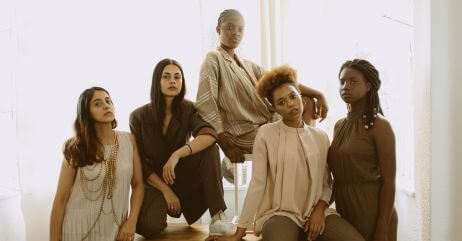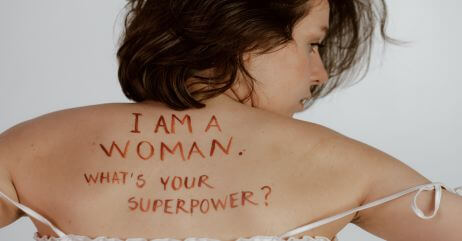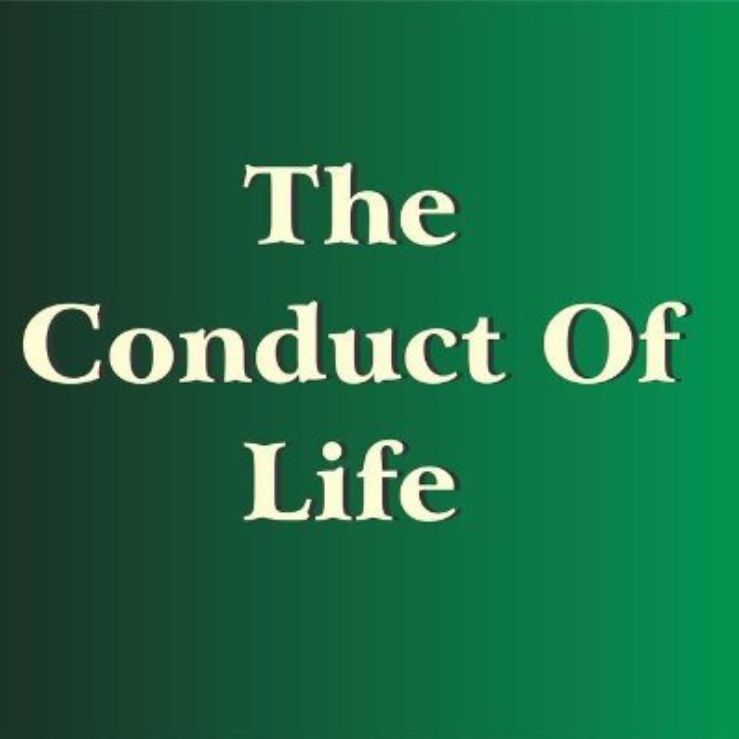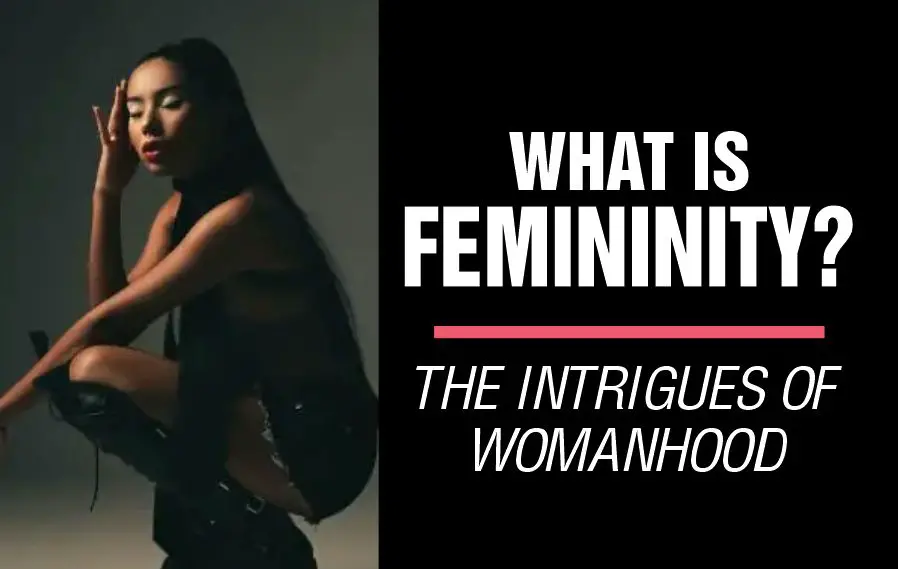Last updated on December 25th, 2024 at 02:01 am
While some perceive femininity as a set of traditional gender roles, others view it as a fluid and empowering force. What is femininity?
Femininity, a concept deeply rooted in cultural and societal norms, covers a diverse range of qualities and attributes traditionally associated with women.
From nurturing and empathy to grace and strength, femininity defies a singular definition, evolving across time and cultures.
In the modern world, the understanding of femininity is undergoing a profound reexamination, challenging stereotypes and embracing the multiple layers of womanhood.
I love watching women effortlessly display their womanhood! It’s so fascinating and sparks my curiosity about what it’s like to be a woman.
Femininity is a world of its own, and it’s incredibly deep and complex.
It’s also worth mentioning that femininity is highly context-dependent. Different cultural, historical, and social contexts can shape the definition and expression of being a woman.
Despite these variations, the feminine gender is generally celebrated for its ability to enhance connection, community, and care.
Pyo Merez in this article shines a brighter light on the essence of femininity, its impact, and how it fits in the modern world.
Suggested: How to Activate your Feminine Energy
Table of Contents
- What is Femininity?
- Types of Femininity
- Historical and Cultural Perspectives
- Femininity in the Modern World
- Femininity Traits
- The Diversity of Feminine Expression
- The Role of Media in Femininity
- Challenges of Femininity
- The Role of Femininity in Promoting Gender Equality and Women’s Rights
- Stereotypes and Misconceptions about Femininity
- Personal Stories and Experiences on Femininity
- The Impact of Femininity on Individual Identity and Self-expression
- Femininity and Relationships
- Dangers of Femininity
- The Future of Femininity
- Frequently Asked Questions
- A Word by The Conducts of Life
Related: Mastering the Lady Etiquette
What is Femininity?

Definition of Femininity
Femininity is a spectrum of qualities traditionally associated with women, including empathy, nurturing, grace, and strength.
It defies a singular definition, evolving across cultures and time.
Embracing femininity involves celebrating the diverse expressions of womanhood and challenging stereotypes.
It’s about recognizing the inherent power and resilience in traditionally feminine traits, empowering individuals to express themselves authentically.
In modern society, the understanding of femininity is undergoing reexamination, promoting inclusivity and acceptance of different gender expressions.
Understanding femininity involves acknowledging its complexity and impact on individual identity and societal perceptions.
And the best part? It’s not just for women! Anyone can embrace their feminine side, regardless of gender identity.
Related: The Balance between Masculine and Feminine Energy
Types of Femininity

1. Careerist Femininity
This type of femininity emphasizes a woman’s pursuit of a successful career and professional fulfillment.
Women who embody careerist femininity prioritize their professional ambitions, leadership roles, and achievements in the workplace.
They may navigate the challenges of balancing career and personal life while striving for recognition and success in traditionally male-dominated fields.
2. Individualized Femininity
Individualized femininity centers on personal autonomy, self-expression, and the rejection of traditional gender roles.
Women who embrace individualized femininity prioritize their unique identities, preferences, and choices, often challenging societal expectations and norms.
This type of femininity celebrates diversity and the freedom to define oneself outside of traditional gender constructs.
Related: Tips on Making a Man Fall in Love with Feminine Energy
3. Vocational Femininity
Vocational femininity focuses on a woman’s dedication to a specific vocation, often in service-oriented or nurturing professions.
Women embodying vocational femininity may find fulfillment in roles such as teaching, healthcare, social work, or other professions that involve caregiving, mentorship, and community service.
This type of femininity emphasizes the value of contributing to the well-being and development of others.
4. Family-oriented Femininity
Family-oriented femininity emphasizes a woman’s role within the family unit and her commitment to nurturing and supporting her family members.
Women who embody this type of femininity prioritize caregiving, domestic responsibilities, and the well-being of their family members.
They may find fulfillment in creating a nurturing and supportive home environment and prioritizing the needs of their loved ones.
Historical and Cultural Perspectives

Historical Perspectives
Throughout history, femininity has been shaped by societal and cultural constructs.
In ancient civilizations, such as Egypt and Mesopotamia, femininity was heavily associated with fertility and motherhood.
Women were expected to fulfill domestic roles and were often confined to the private sphere.
During the Middle Ages, religion played a significant role in defining femininity.
Christianity viewed women as the weaker sex and linked them to sin and temptation.
This led to the relegation of women to subordinate roles in society, such as wives and mothers.
Chastity and modesty were emphasized as virtues for women to uphold.
Cultural Perspectives
Cultural perspectives on femininity vary greatly across different societies and communities.
The concept of femininity is shaped by cultural values, beliefs, and practices.
In some cultures, femininity may be associated with traits such as modesty, gentleness, and selflessness.
In contrast, other cultures may value independence, assertiveness, and career-oriented behavior in women.
The expectations placed on women can differ significantly, ranging from societies that emphasize women’s role as caretakers and homemakers to those that encourage women’s participation in the workforce and public life.
Related: Feminine Dark Energy Room Ideas
Femininity in the Modern World
What it means to be feminine in the modern world is undergoing a significant transformation, influenced by shifting perceptions, media, and cultural representations.
In modern society, there is a growing recognition of the diversity and complexity of femininity.
And so, it is moving away from traditional stereotypes and embracing a more inclusive understanding of what it means to be feminine.
The impact of media and popular culture cannot be understated in shaping the portrayal of femininity.
While historically, media often reinforced narrow and unrealistic standards of femininity, there is now a greater push for authentic and diverse representations of women.
This includes showcasing women of different backgrounds, body types, and identities, challenging the traditional norms and offering a more nuanced view of femininity.
The 20th century experienced shifts in the way womanhood was seen and expressed. The suffrage movement and other feminist movements challenged traditional gender roles, advocating for women’s equality and autonomy.
In the 1960s and 1970s, the women’s liberation movement took things even further, rejecting traditional feminine traits altogether and emphasizing gender neutrality or androgyny.
Femininity Traits
1. Nurturing: This trait involves caring for and supporting others, often associated with qualities such as compassion, empathy, and the ability to create a nurturing environment.
2. Sensitivity: It often includes a heightened sensitivity to emotions, both one’s own and those of others. This trait can lead to a deeper understanding of feelings and a greater capacity for empathy.
3. Collaborative: It can be characterized by a collaborative and cooperative approach to relationships and problem-solving, valuing teamwork and consensus-building.
4. Intuitive: Many associate femininities with intuition, the ability to understand situations and people on a deeper, more instinctual level.
5. Expressive: Femininity often involves a willingness to express emotions and thoughts openly, embracing a more expressive communication style.
6. Adaptive: This trait involves being flexible and adaptable in various situations, often associated with the ability to navigate change and uncertainty.
7. Empathetic: Empathy is a key trait of femininity, involving the capacity to understand and share the feelings of others.
The Diversity of Feminine Expression
The diversity of feminine expression refers to the vast range of ways in which women can express themselves and their identities.
It recognizes that there is no one fixed or universal way to be a woman and that femininity can be expressed in countless different ways.
This includes variations in appearance, interests, behaviour, and more.
Some women may choose to conform to traditional gender roles and expectations, while others may challenge or reject them entirely.
This diversity allows for a richer and more inclusive understanding of what it means to be a woman, and emphasizes the importance of accepting and celebrating individual differences.
The Role of Media in Femininity
Femininity in the media often reflects and perpetuates societal norms and expectations, shaping perceptions of women and their roles.
Portrayals of femininity can range from empowering and diverse to stereotypical and limiting.
Media representations influence how womanhood is perceived, impacting women’s self-image and societal attitudes.
It’s crucial to critically analyze these presentations, considering their implications for gender equality and the reinforcement of traditional gender roles.
By promoting more diverse and authentic representations of femininity, the media can contribute to a more inclusive and empowering narrative, allowing women to see themselves reflected in a broader spectrum of roles and identities.
Challenges of Femininity
Challenges to femininity stem from various sources, including gender norms and societal pressure.
These norms often dictate how women should behave, dress, and express themselves, creating expectations that can be restrictive and limiting.
Additionally, patriarchy, which is a system where men hold primary power and predominate in roles of political leadership, moral authority, social privilege, and control of property, can have a significant impact on womanhood.
It can reinforce traditional gender roles and perpetuate the idea that women should be submissive, nurturing, and focused on domestic duties.
This can lead to the devaluation of traits and behaviours that are not traditionally associated with womanhood.
Related: The Origins Of Gender Stereotypes Through The Ages
The Role of Femininity in Promoting Gender Equality and Women’s Rights
Femininity promotes gender equality and women’s rights by challenging traditional gender norms, celebrating women’s diverse strengths, and advocating for the recognition of women’s contributions.
By embracing a wide range of qualities and characteristics traditionally associated with women, femininity helps break down stereotypes and biases.
By so doing, it empowers women to express themselves authentically and contribute meaningfully to society.
It also encourages a more inclusive understanding of gender, creating space for women to assert their sense of agency and pursue their aspirations.
Stereotypes and Misconceptions about Femininity
Stereotypes and misconceptions about femininity often confine women to narrow, limiting roles, perpetuating the idea that femininity is synonymous with weakness or passivity.
These misconceptions overlook the diverse strengths and qualities that women possess, such as resilience, empathy, and leadership.
By pigeonholing femininity, society disregards the richness of women’s experiences and contributions.
Overcoming these stereotypes is crucial for creating a more inclusive society, where women are free to express themselves without judgment.
Overcoming these misconceptions will also allow women to pursue their aspirations without being confined by rigid gender expectations.
Personal Stories and Experiences on Femininity

These personal stories and experiences reflect the diverse and multilayered impacts of femininity on individual identity and self-expression.
It showcases how embracing and redefining femininity can empower you to live authentically and challenge societal norms
Take a look…
Sarah’s Journey
Sarah struggled with societal expectations of femininity from a young age.
Growing up, she never fit into the typical “girly” mold and often felt like an outsider.
As she entered her teenage years, Sarah discovered her passion for sports and was drawn to activities traditionally associated with masculinity.
However, embracing her athleticism made her question her femininity.
It took years for Sarah to realize that femininity is not limited to societal standards and that she could define it for herself.
Today, she celebrates her strength, athleticism, and passion for sports as integral parts of her feminine identity.
Maria’s Career Challenges
Maria pursued a career in a male-dominated industry, where femininity seemed to be frowned upon.
She often felt the need to suppress her femininity at work, believing it would hinder her progress.
However, she later realized that her femininity was a unique advantage that allowed her to approach problems with empathy and collaboration.
Maria began incorporating her femininity into her leadership style, which not only helped her thrive in her career but also inspired other women in her industry to do the same.
The Impact of Femininity on Individual Identity and Self-expression
John’s Journey
John grew up feeling confined by societal expectations of masculinity, constantly suppressing his emotions and true self-expression.
Through introspection and personal growth, John discovered that he resonated more with feminine qualities and started exploring and embracing his own femininity.
This newfound self-acceptance allowed him to be authentic and comfortable in his own skin.
The impact of femininity on John’s identity was transformative, as he realized that society’s rigid gender roles were limiting and that embracing femininity did not erase his masculinity but enhanced the complexity of his identity.
Lily’s Artistic Expression
Throughout her life, Lily has found solace and empowerment in various forms of artistic expression.
She believes that femininity offers a unique lens through which she can explore her creativity.
Lily perceives femininity as a wellspring of inspiration, using it to depict and celebrate aspects of womanhood, vulnerability, strength, and resilience in her artwork.
Embracing her femininity has not only allowed Lily to find her artistic voice but has also given her a deeper understanding and appreciation of her own identity.
Related: The Effects of Gender Stereotypes on People
Femininity and Relationships
Femininity influences relationships by shaping communication styles, emotional expression, and societal expectations.
It can impact how you navigate intimacy, support, and power dynamics within relationships.
Embracing femininity can encourage empathy, nurturing, and collaboration, enriching interpersonal connections.
However, societal stereotypes and gender norms may also impose constraints on individuals, affecting their roles and behaviours within relationships.
Challenging these norms and embracing a more inclusive understanding of femininity can lead to healthier, more equitable relationships, where individuals are free to express themselves authentically and engage in mutually respectful and fulfilling partnerships.
Whether it’s setting boundaries or speaking out against injustice, your feminine energy can be a powerful tool for creating positive change in your relationships and the world.
It’s about embracing your unique strengths and natural characteristics and using them to create meaningful connections with the people in your lives.
People who have fragile femininity might have issues appreciating themselves.
This can lead to all sorts of stuff, like dieting and surgery to please society, or even conforming to traditional gender roles.

Related: Understanding Gender Roles and Expectations in Society
Dangers of Femininity

It is important to note that femininity itself is not inherently dangerous.
However, societal expectations and stereotypes surrounding femininity can lead to certain challenges and dangers for individuals:
1. Gender Stereotyping: Society assigns specific roles and expectations to individuals based on their gender. This can create pressure and limitations for those who identify as feminine, as their behaviors and expressions might be rigidly defined.
2. Objectification and Sexualization: The objectification and sexualization of feminine individuals are prevalent issues. This can lead to the exploitation of their bodies, undermining their autonomy, and perpetuating harmful power dynamics.
3. Gender-based Discrimination: Feminine individuals may face discrimination and prejudice based on their gender, such as unequal pay, limited career opportunities, or being marginalized in certain fields and industries.
4. Body Image and Beauty Standards: Society often emphasizes specific beauty standards that can disproportionately affect feminine individuals, leading to body dissatisfaction, low self-esteem, and even mental health issues like eating disorders.
5. Double Standards: Feminine individuals might face unfair double standards and expectations compared to their masculine counterparts. Traits associated with femininity, such as emotionality or sensitivity, are often devalued or seen as weaknesses.
6. Intimate Partner Violence: Feminine individuals may be at an increased risk of experiencing intimate partner violence due to power imbalances and gender-based stereotypes. This can have severe physical, emotional, and psychological consequences.
Related: Reconciling Femininity and Feminism
The Future of Femininity

One of the most exciting aspects of the future of being a woman is the emphasis on authenticity.
Women are no longer content to fit into prescribed boxes and are instead embracing their unique individuality.
From bold fashion choices to unapologetic self-expression, women are breaking free from outdated societal expectations and blazing their paths.
Another exciting development in the future of femininity is the emphasis on inclusivity.
Women of all shapes, sizes, and backgrounds are coming together to celebrate their diversity and build communities that uplift and empower one another.
No longer are women pitted against one another or forced to conform to narrow beauty standards.
Instead, they are supporting each other’s journeys and celebrating each other’s successes.
Frequently Asked Questions
What are the 4 types of femininity?
The four types of femininity are traditional, assertive, expressive, and androgynous, each representing different aspects of womanhood and gender expression.
What is feminine and example?
Feminine refers to qualities or attributes traditionally associated with women, such as grace, empathy, and nurturing. An example is a woman’s gentle and caring nature.
What is the literal meaning of feminine?
The literal meaning of feminine relates to qualities or characteristics typically associated with females, such as delicacy, elegance, and sensitivity.
What is feminine of a person?
The feminine of a person refers to an individual who embodies qualities or traits traditionally associated with femininity, regardless of their gender identity.
A Word by The Conducts of Life
Femininity encompasses a rich tapestry of qualities, expressions, and experiences that defy narrow stereotypes.
It embodies strength, empathy, nurturing, and a myriad of other traits that contribute to the diverse and multifaceted nature of womanhood.
Embracing femininity means celebrating individuality, challenging societal expectations, and fostering inclusivity. By recognizing the complexity and fluidity of femininity, we pave the way for a more equitable and empowering world where all individuals are free to express themselves authentically
References:
- What are gender roles? And how do they shape our sexuality?
- Gender norms and ideologies about adolescent sexuality
- Gender, power and progress: How norms change
- Feminist Perspectives on Sex and Gender
Pyo Merez (PsyD) is a distinguished adolescent and adult psychologist at the forefront of mental health advocacy.
With expertise in cognitive and developmental psychology, focusing on social relationships, cultural contexts, and individual differences, Pyo has dedicated his career to empowering adolescents and adults.
As a sought-after speaker and panelist, Pyo shares invaluable insights on issues affecting young people, contributing to a deeper understanding of mental health and well-being in today's society.



Lots of great points. I am a female working in a male-dominated environment, specifically the military. It’s very interesting how people not in the military have an opinion about how women dress and act in the military. We aren’t feminine enough or we’re too feminine. We shouldn’t wear pants yet we shouldn’t also get to wear maternity uniforms. It’s incredible. Most of the people in the military don’t care – as long as you’re effective at your job, how you look is secondary.
You have a great point Gloria. The Military is seen as stoic and expected not to show weakness. That’s very wrong from society. People who work in the Military are humans and should express emotions. Good enough, you are not buying that toxic stereotype. Keep it up, and also educate others that vulnerability is not a weakness.
More informative on feminine and sexuality
Sure. Thanks for your remark.